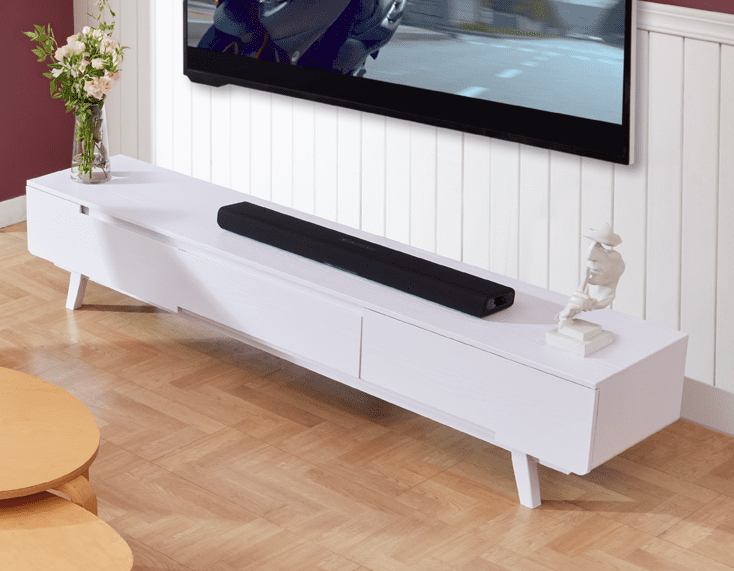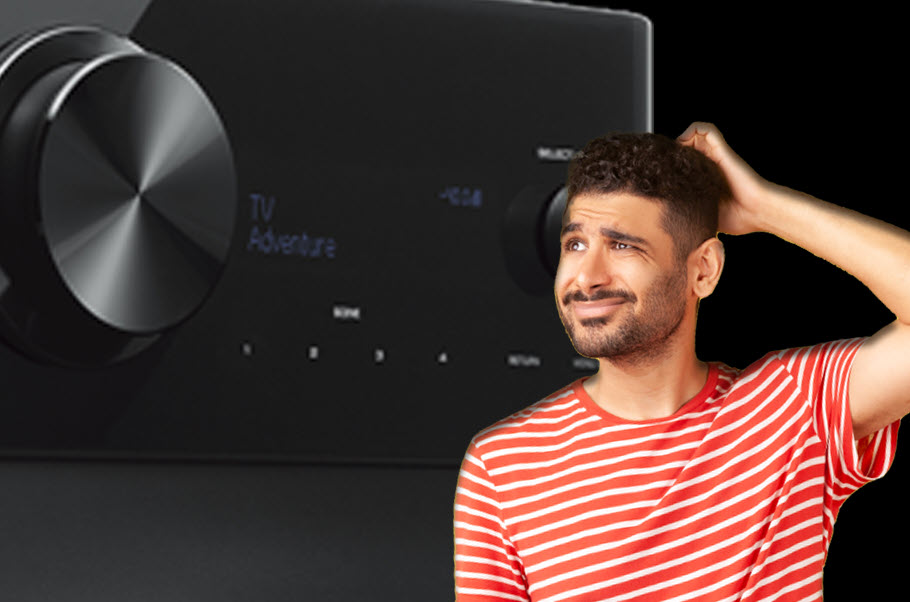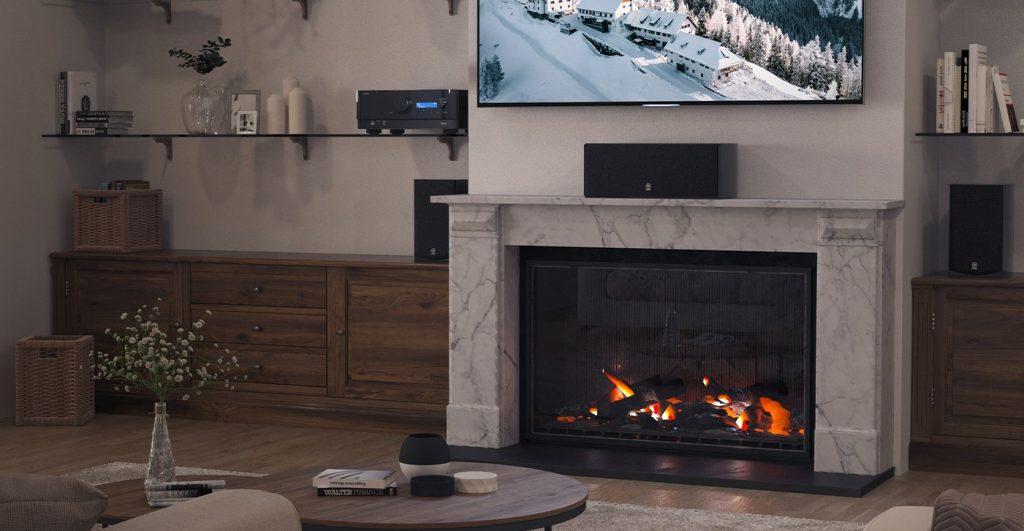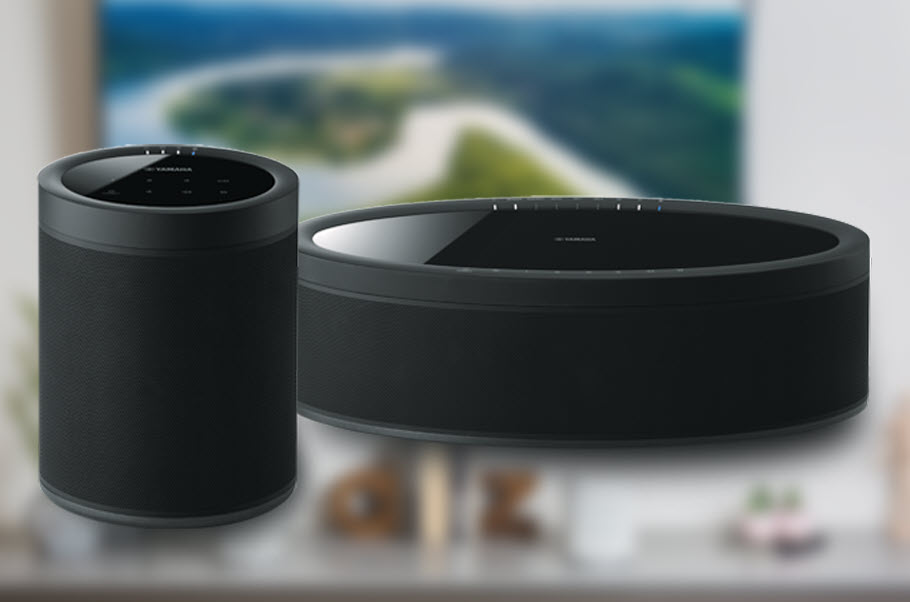Why Do AVENTAGE Receivers Have a Fifth Foot?
This signature feature may seem like a simple appendage … but it serves an important purpose.
Yamaha AVENTAGE AV receivers are widely known for their meticulous design and powerful surround sound capabilities. Many of their unique features are unseen. But one of their most notable is actually in plain sight: a fifth foot under the chassis.
So why this extra appendage? Let’s find out.
Design Considerations
With most high-end audio products, mechanical engineers spend significant planning resources to reduce the amount of vibration and resonance permeating throughout the chassis. In fact, chassis stability is a consideration even before the electronic engineers finish building the circuit boards. Decisions like where to place the power transformer and where to mount the heat sinks and amplifier modules are all made in the early design stages.
Why is a Solid Chassis So Important?
The solidity of the chassis has great significance due to a phenomenon called microphonics, whereby electronic components can generate a small electrical signal (or a variation in signal flow) when vibrated from an external source. When designing electronic circuits to precisely reproduce every nuance of an audio signal, every detail must be considered, and so vibration reduction is very important.
Structural Reinforcement
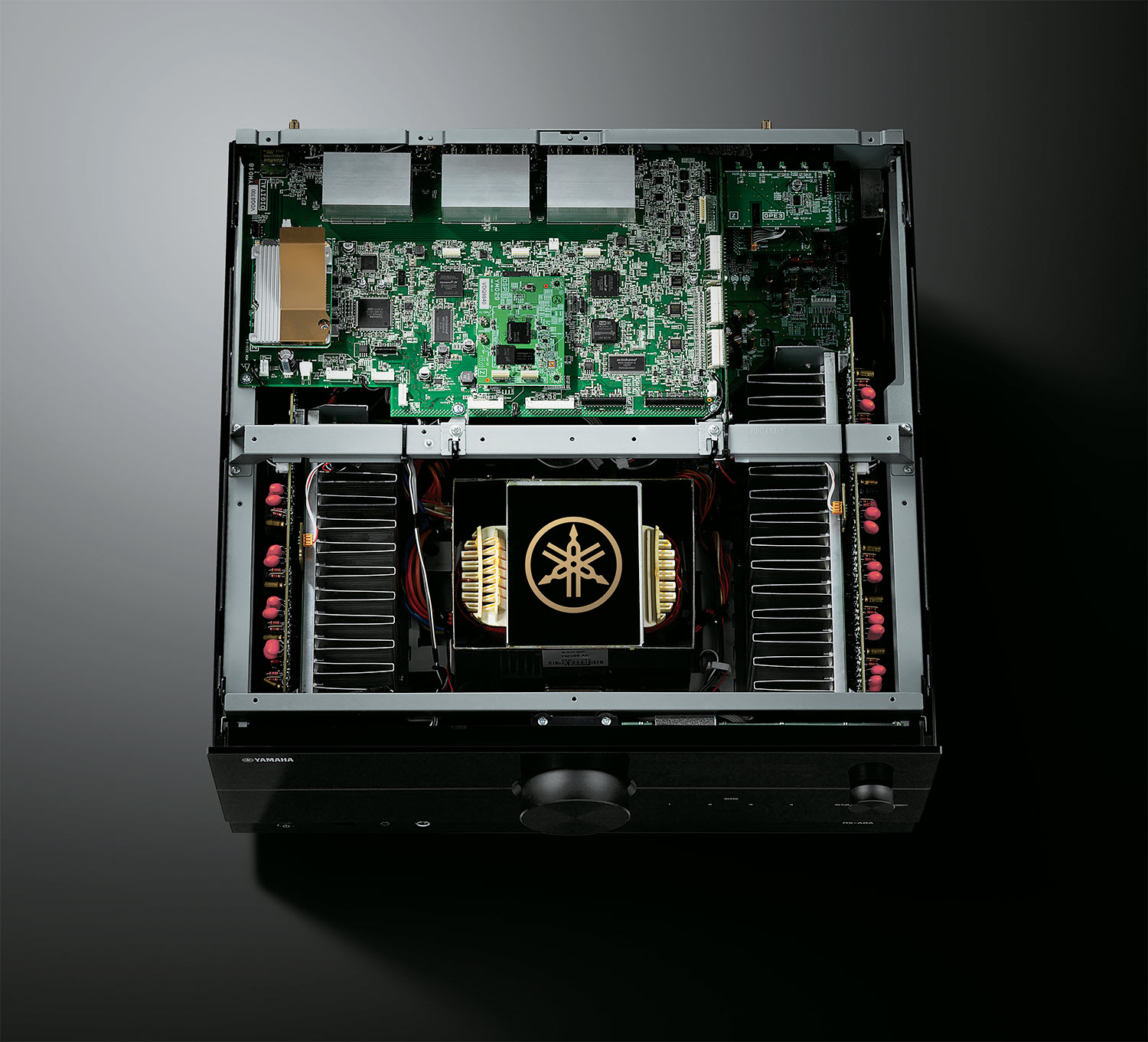
The best architecture for high-end audio is to use a symmetrical layout, where the amplifiers for the left side of the room are on one side of the chassis and the amplifiers for the right side of the room are on the other side. This provides better channel separation between the left/right signals, spreads out the cooling heatsinks for more efficiency and makes room for the power supply to be placed in the middle of the chassis. Mounting the power supply in the center is beneficial because it shortens the distance to the individual channels. Shorter distance means less impedance for more dynamic sound reproduction.
The transformer is the heaviest component in an AV receiver; however, suspending it in the center of the chassis is usually the furthest point from the four supporting feet in the corners. Mechanical designers account for this with the addition of metal brackets and mounting hardware to give the transformer a solid platform for mounting. However, even with all this reinforcement, the transformer’s inherent mechanical vibrations can migrate through the chassis and eventually induce very small vibrations to the sensitive electronics on the circuit boards.
Problem Solved
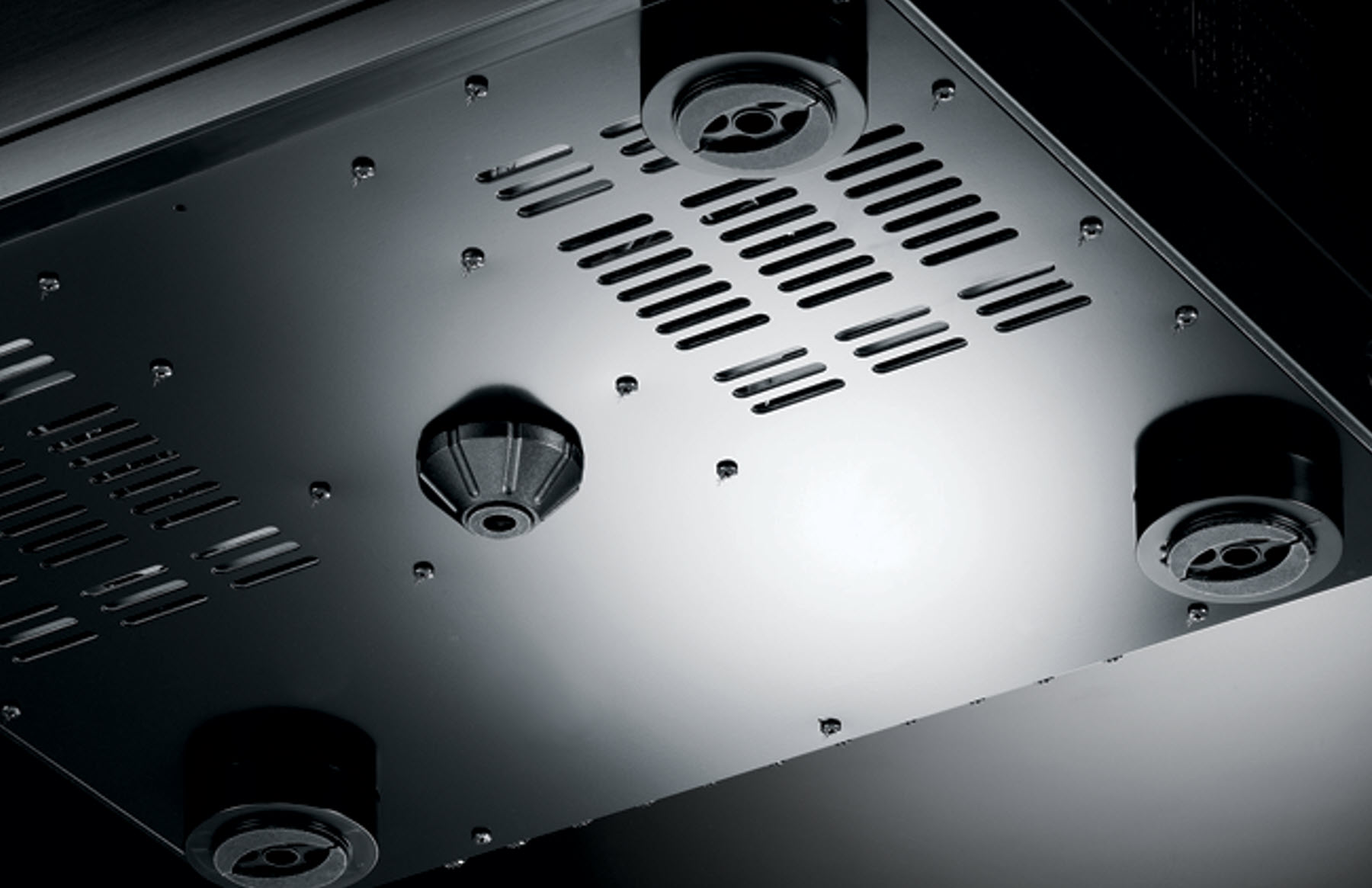
Yamaha engineers came up with a simple but unconventional solution: simply add a fifth foot under the massive power supply for additional stability. It performed as theorized, resulting in lower chassis vibration with more detailed sound imaging and higher dynamics. Hours of critical listening tests proved that such a seemingly simple solution worked well.

To quantify these results, Yamaha engineers identified a Laser Doppler Vibrometer (shown in the illustration above) as the perfect tool for the job. This test instrument reflects a calibrated laser beam off the surface of the chassis and measures where and how much mechanical vibration is present. When the fifth foot was first used, the laser’s measurements indicated a dramatic decrease in chassis deflection (vibration). With the unit still connected to the vibrometer, the engineers experimented with different materials, shapes and pad materials for improved results before selecting the final design.
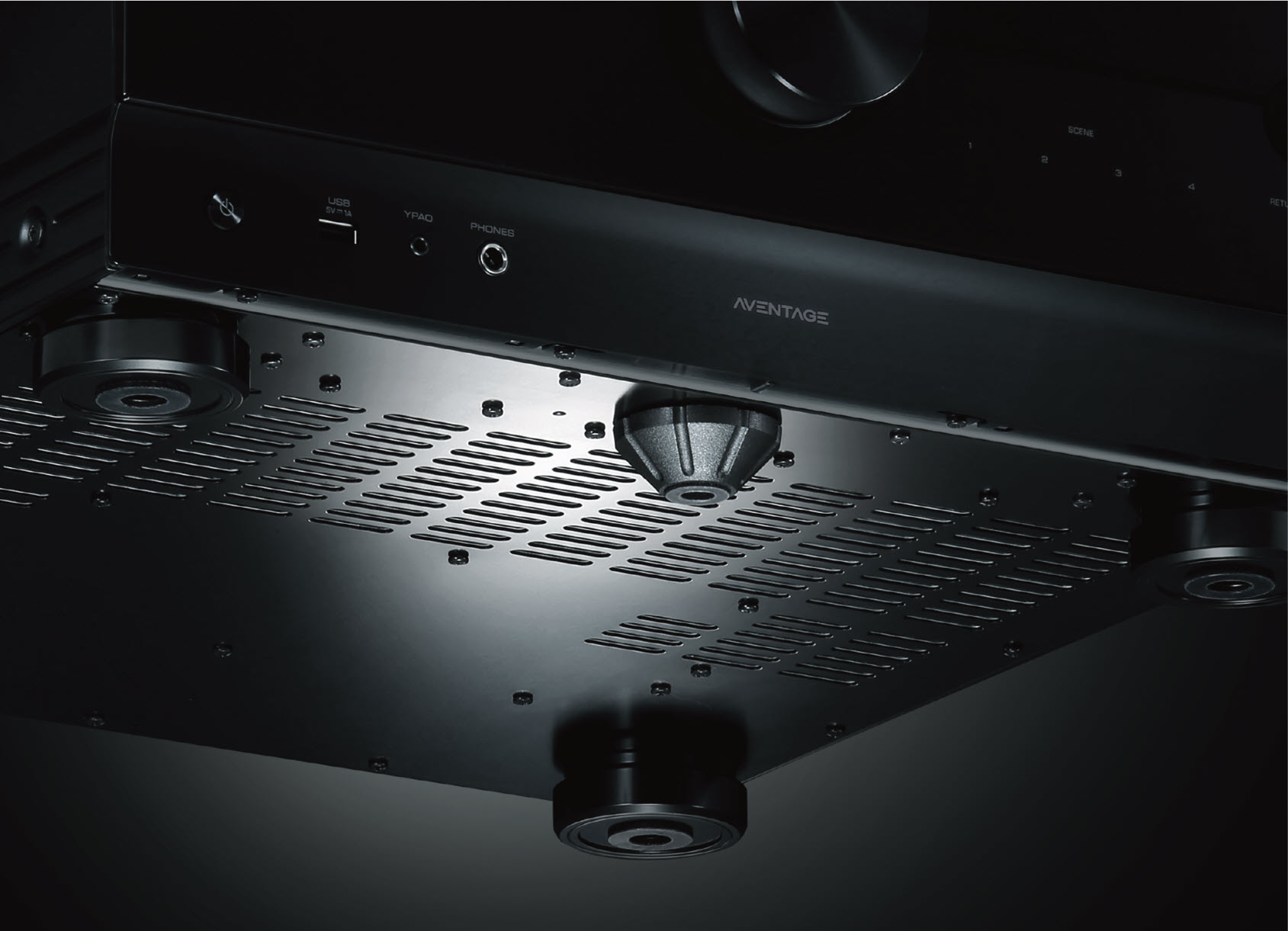
New and Improved
The latest AVENTAGE AV receivers have undergone a substantial upgrade of internal chassis reinforcements that even further stiffen the structure. Always looking to get better results, engineers revisited the mechanical testing room to confirm that the theorized upgrades, in fact, performed as expected. Not surprisingly, the chassis was much more rigid. Further testing revealed that the point of maximum deflection or vibration was no longer located directly under the transformer. In fact, the extra rigidity of the new chassis moved the location of greatest vibration to a different zone of the bottom panel. Final experimentation found that mounting the fifth foot towards the front of the new AVENTAGE models provided up to 10 times improvement in vibration reduction.
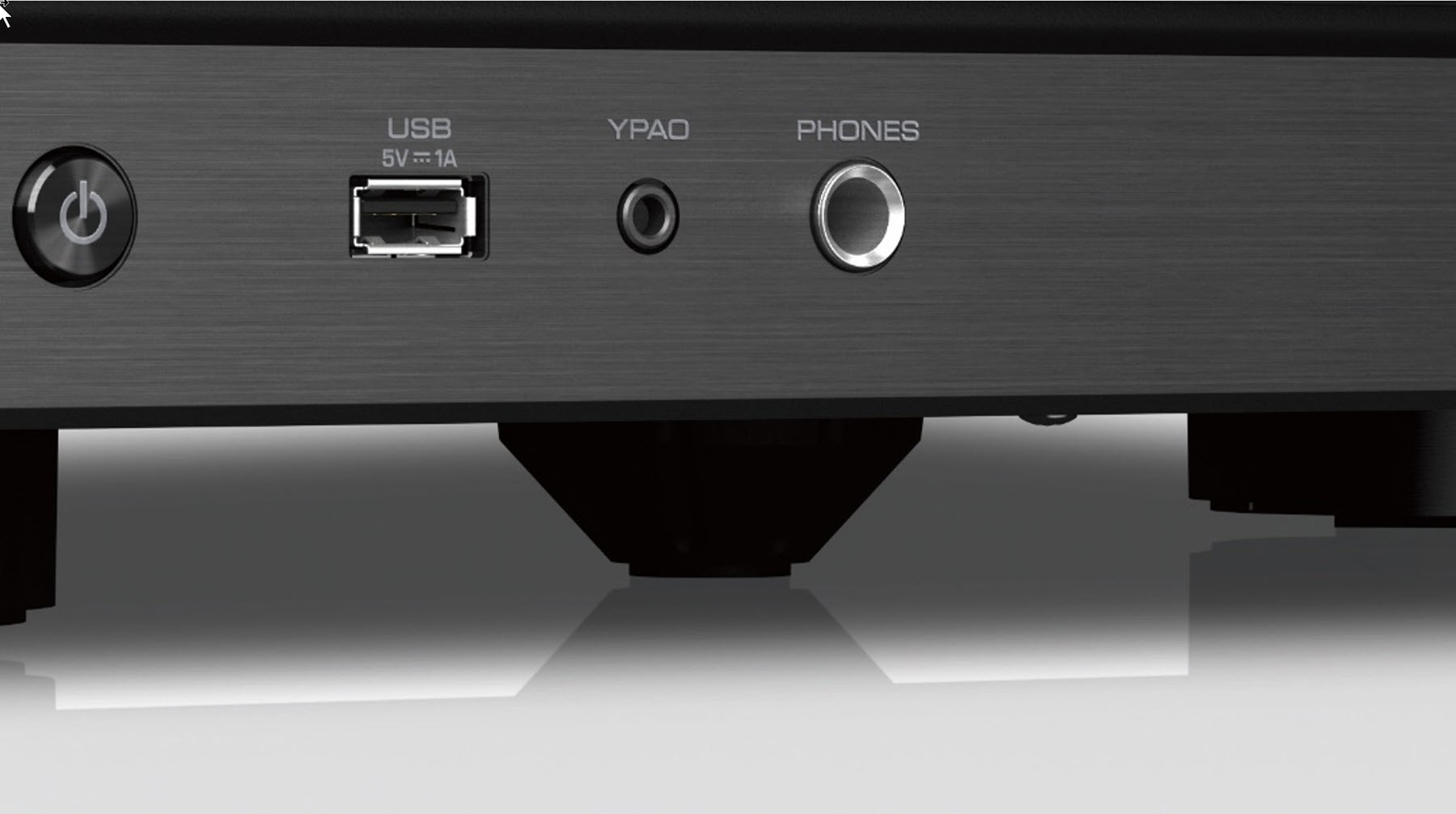
The bottom line is that mechanical stability is paramount for precise sound reproduction. Yamaha uses a simple but extensively tested method for providing the best possible sound for your investment. But don’t take our word for it. See — and feel — it for yourself!
Check out these related blog articles:
What’s the Difference Between 4K Ultra HD, 8K UHD and HDR10+?
HDMI® 2.1: What It Means for Gear and Gamers
What is Dolby Atmos Height Virtualization?
How to Recreate the Movie Theater Experience at Home
Click here for more information about Yamaha AVENTAGE AV receivers.










